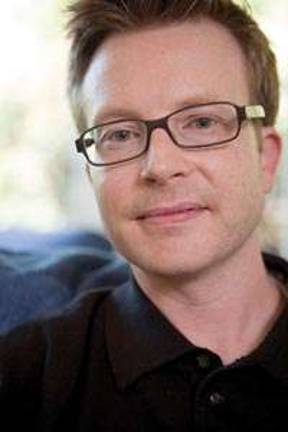A Guide to Living in the Now

Author offers techniques for reducing stress by staying in the present Whether worrying about the future or rehashing the past, it may always seem difficult to focus on the present. However, Elisha Goldstein, Ph.D, makes the case in his new book, The Now Effect: How This Moment Can Change the Rest of Your Life, that living in the moment can lead to a happier, healthier and more fulfilling life. "The Now Effect? is those moments of clarity during the day when we connect to what really matters at any given time," Goldstein said. Research shows that how people pay attention and what they pay attention to affects how the brain grows. Sensory overload and numerous distractions from what is going on in the present moment allow the brain to go on autopilot, allowing the mind to make decisions automatically. Goldstein argues that by becoming aware of our thought processes, we have the ability to rewire how we think, stop automatic thoughts and choose to think differently. Life is decided, he said, in these spaces, or "choice points," where we can decide how to respond to what is going on around us. "We have the ability to retrain our subconscious mind to be more present to what? here right now," he said. In The Now Effect, Goldstein highlights several benefits of living in the present. These include focusing better at work and at home and opening up to feelings of love, hope, empathy and compassion. It also lends itself to increased emotional intelligence and the ability to relax more effectively in moments of distress. Goldstein offered the following example: "Say you are walking down the street and in the distance you see an acquaintance. As you walk closer, you smile and wave but he doesn't look at you and just walks by. If you are in a good mood, you may think, 'Oh, he didn't see me' but if you're anxious or depressed, you may think, 'Is he mad at me? Did I do something wrong?' and become insecure." Goldstein said that becoming aware of how our moods affect our perception of situations can help us relax and gain control over our emotions so we can alter how we react to what goes on in our lives. In addition, Goldstein said being present in the here and now can allow for greater connections, both internally and to others, and help us be more flexible in decision making and responses to people and challenges. Finally, the now effect can open us up to what is good in life. "Our brains are naturally inclined to anxiety and negativity," Goldstein said. "We can train our minds to focus more on the positive." So what keeps us from being able to live in the present? Goldstein said that our greatest gift as humans may also be our greatest curse. "The biggest barrier to being in the present is the same thing that sets us apart from the rest of the animal kingdom," he said. "That's our ability to think, reflect, formulate plans and exert free will." Whether we are anxiously awaiting tomorrow or fixating on what happened a year ago, many people find it hard to live in the moment because they are wondering what could or what would have happened. "The No. 1 thing that takes us away from the present is playing the 'what if?' game," he said. In the book, Goldstein offers practical techniques to counter this kind of thinking and bring readers back to the now. The simplest technique, he said, is to ask the questions, "Where am I starting from now? What is my body doing? Where is my mind?" "Doing that," said Goldstein, "widens the space between stimulus and response." Another method is to use what he calls present nostalgia to connect ourselves to what really matters. "Project yourself into the future and ask yourself what the more distant you would say you're missing in this very moment," he said. "It's a way of tricking your brain to think with more perspective." Goldstein also offers simple breathing exercises, recommending envisioning breathing in to keep calm and breathing out to release burdens. He also warns of the disconnected culture we live in. Facebook, Twitter and other social media may make us feel we are connected to others, he said, but that is only a surface connection. He recommends focusing on real relationships in the present. Goldstein provides video demonstrations of these practical techniques accessible via Microsoft Tags throughout the book and embedded videos throughout the e-book. He emphasized that The Now Effect is not a universal guide; the techniques can be tailored by individuals to what suits them. "As readers go through the book, I don't want them to swallow it whole," he said. "I want them to use the book as a guide and see what works for them. What is most valuable is the person's experience."